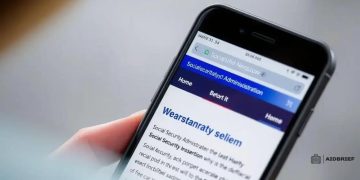Beneficiary notification procedures enhanced: are you ready?

Enhanced beneficiary notification procedures improve clarity and engagement by utilizing technology for timely, personalized communication, ultimately increasing satisfaction and trust among recipients.
Beneficiary notification procedures enhanced are crucial for efficient communication in any organization. Have you considered how these improvements can simplify your operations and boost satisfaction? Let’s dive into this effective approach.
Understanding beneficiary notification processes
Understanding beneficiary notification processes is essential for any organization that aims to improve communication and service quality. These processes ensure that beneficiaries receive timely and accurate information about their benefits and entitlements.
Key Components of Notification Processes
There are several key components to effective beneficiary notification processes. First, clarity in the communication is vital. It’s important that notifications are easy to read and understand. Next, timeliness plays a crucial role; beneficiaries should receive information promptly to make informed decisions.
Ways to Enhance Notification Efficiency
Consider implementing technology that automates notifications. This can save time and reduce errors. Regular training for staff involved in these processes can also improve knowledge and efficiency.
- Utilize clear language in notifications.
- Ensure notifications are sent in a timely manner.
- Incorporate feedback mechanisms to assess clarity.
- Leverage technology for automated notifications.
Additionally, organizations should regularly review their notification procedures to identify areas for improvement. Ensuring that protocols are up-to-date will help maintain engagement with beneficiaries. Also, it’s beneficial to provide beneficiaries with multiple channels for receiving their notifications, whether by mail, email, or text message.
Lastly, involving beneficiaries in the process by seeking their feedback can lead to a better understanding of their needs. This can enhance satisfaction and trust in the organization. The goal is to create a responsive and transparent notification process that benefits everyone involved. By prioritizing these factors, organizations can significantly improve their beneficiary notification processes.
Key enhancements for effective notifications
Key enhancements for effective notifications can make a significant difference in how information is communicated to beneficiaries. It’s important to understand that the way notifications are crafted plays a vital role in their effectiveness.
Personalization of Notifications
One effective strategy is to personalize notifications for the beneficiaries. Tailoring messages based on individual preferences can improve engagement. For instance, using names and referring to specific benefits helps recipients feel valued.
Clarity and Simplicity
Notifications should be clear and straightforward. Avoid complex jargon that may confuse the reader. Using simple language ensures that the important details are easily understood. Another enhancement is to format the information in a visually appealing way.
- Use bullet points to highlight key details.
- Incorporate headers for easy navigation.
- Utilize graphics when appropriate.
- Maintain a consistent style across all communications.
Effective notifications also require timely delivery. Ensuring that beneficiaries receive their messages at the right time can impact their actions positively. Implementing a schedule for sending out notifications based on deadlines or new information keeps beneficiaries informed.
Integrating feedback mechanisms into notifications allows beneficiaries to express their opinions. This feedback can guide future improvements. By focusing on these enhancements, organizations can create an environment where beneficiaries feel supported and informed.
Best practices for implementation

Implementing effective beneficiary notification procedures requires careful planning and execution. Following best practices can ensure that these processes are seamless and beneficial for all parties involved.
Planning and Strategy
A solid plan is the foundation of successful implementation. Start by identifying the specific needs of your beneficiaries. Gather data on their preferences regarding how they receive information. This helps create a targeted approach. Incorporating their feedback will also help refine your processes.
Training Staff
Once your strategies are in place, it is crucial to train staff on these new procedures. Proper training ensures everyone understands the goals and methods of communication. Engaging staff in role-playing exercises can help them practice delivering notifications effectively.
- Cover the purpose of the notifications.
- Teach how to use any new software tools.
- Review case studies to illustrate successful implementations.
- Encourage open discussions about challenges.
In addition to training, it is important to establish clear guidelines for creating notifications. Use a standardized format for consistency, which can enhance clarity. For example, include subject lines that summarize the content and keep messages concise.
Utilizing technology is another best practice for implementation. Automated systems can streamline the process and ensure timely delivery. Invest in user-friendly software that allows for easy updates and adjustments based on feedback. Remember, effective notifications are not just about the message but also about how and when they are delivered.
Impact of enhanced notifications on recipients
The impact of enhanced notifications on recipients is significant. Clear and timely notifications lead to better understanding and engagement from beneficiaries. When recipients receive information that is easy to follow and relevant, their overall experience improves.
Increased Awareness
Enhanced notifications help recipients stay informed about important updates. This awareness enables them to make better decisions regarding their benefits. It also reduces confusion and frustration that can arise from inadequate information. Beneficiaries who receive regular updates feel more connected to the organization, fostering trust and loyalty.
Improved Responsiveness
When notifications are enhanced, recipients can respond more quickly to necessary actions. For instance, if beneficiaries know they need to renew services or provide additional information, timely reminders can prevent lapses. The quicker they act on notifications, the more they can benefit from services.
- Clear messages lead to better understanding.
- Timely reminders encourage prompt action.
- Personalized communications foster connection.
- Consistent updates build trust.
Furthermore, enhanced notifications can lead to a positive feedback loop. As beneficiaries have better experiences, they are more likely to share their satisfaction with others. This word-of-mouth can attract new beneficiaries to the organization, strengthening its reputation in the community.
Additionally, organizations that prioritize effective notifications can gather valuable data. By analyzing how recipients interact with notifications, they can refine their strategies further. Understanding what resonates with beneficiaries allows for ongoing improvements in communication.
Future trends in beneficiary communications
Future trends in beneficiary communications are evolving rapidly. With advancements in technology, organizations are exploring new ways to engage beneficiaries effectively. As we look ahead, several key trends are likely to shape how notifications are delivered.
Increased Use of AI and Automation
Artificial intelligence is becoming instrumental in personalizing communications. Automated systems can analyze data and send tailored notifications based on individual needs. For instance, AI can determine the best time to send messages, ensuring that beneficiaries receive them when they are most likely to engage.
Greater Emphasis on Mobile Communication
With the rise of smartphones, mobile communication is gaining importance. Organizations are investing in mobile-friendly notifications to reach beneficiaries where they are. This means designing messages that are easy to read on small screens and utilizing apps for real-time updates.
- Push notifications for urgent updates.
- Text messages for quick reminders.
- Interactive apps for accessing services.
- Visual content to enhance understanding.
Moreover, interactive communication is on the rise. Beneficiaries want to engage with the content they receive. This can include clicking on links for more information or responding to surveys about their experiences. Encouraging this interactivity can lead to better feedback and refinement of services.
Social media is also becoming a vital channel for beneficiary communication. Organizations can reach a broader audience and engage with beneficiaries directly. Providing information through social platforms can enhance accessibility and encourage community building.
Looking to the future, organizations must adapt to these trends to improve their communication strategies. Embracing these changes will not only enhance the experience for beneficiaries but also help organizations stay relevant in a fast-paced digital world.
FAQ – Frequently Asked Questions about Beneficiary Notification Procedures
What are the key benefits of enhanced beneficiary notifications?
Enhanced beneficiary notifications provide clarity and timely information, leading to better engagement and improved overall satisfaction.
How can technology improve beneficiary communication?
Technology can automate notifications and personalize messages, ensuring that beneficiaries receive relevant information when they need it.
Why is feedback important in beneficiary communication?
Feedback allows organizations to understand recipient needs and preferences, helping to refine and improve the notification process.
What role does mobile communication play in notifications?
Mobile communication enables organizations to reach beneficiaries instantly and effectively through text messages and mobile apps, enhancing accessibility.





